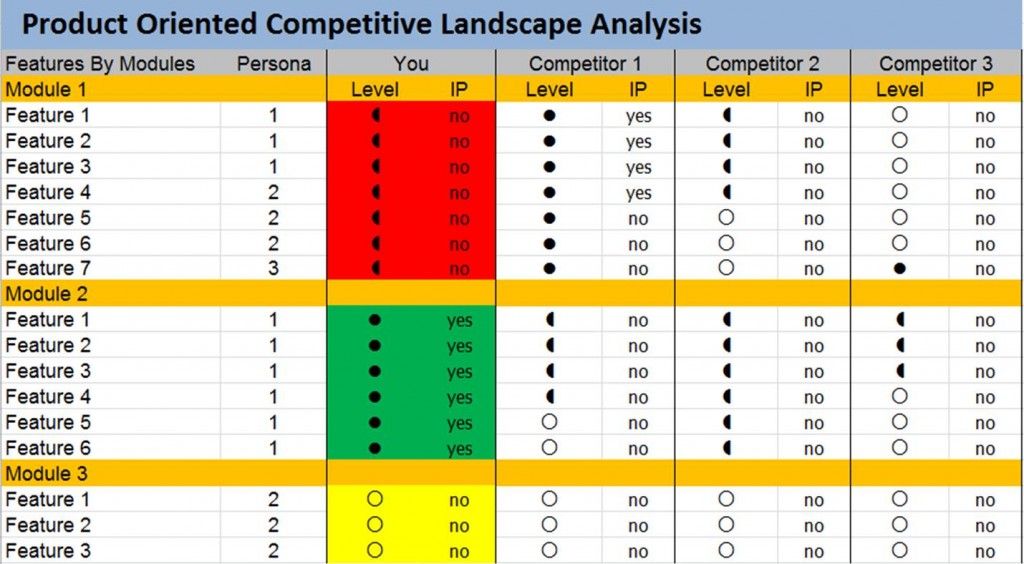By Rivi Aspler
Let’s be honest, if you were the only one in your market to sell a product, and your customers didn’t have a real BATNA (Best Alternative to a Negotiated Agreement), you could supply whatever product and get away with it quite easily.
 As product people, having an up-to-date (1/year) product oriented competitive landscape analysis is ‘a must’. That’s the only way for you to make sure that your product not only matches the target customer requirements but more importantly exceeds competitors’ offering in at least 3 product areas.
As product people, having an up-to-date (1/year) product oriented competitive landscape analysis is ‘a must’. That’s the only way for you to make sure that your product not only matches the target customer requirements but more importantly exceeds competitors’ offering in at least 3 product areas.
This post will offer you an excel based tool that you can use in order to gather and analyze your competitors’ product offering as well as possible conclusions that you can derive from such an analysis.
Let’s focus first on the tool,
First, select the 3 competitors whose products you are most interested in analyzing. Don’t go for more than that. A typical tender would usually have a short list of 3 vendors. Choose these 3 and focus on them. Then, populate the table below with data. The following data should be inserted:
- Feature –List features (by module) on which you would like to collect competitors information.
- Persona – The role at which the feature is targeted.
- Level – Compliance Level (in the attached example the scale is 1-3)
- IP – Is there a formally acknowledged IP that can be associated with this feature.
Getting feature level information that is both accurate and detailed is a magic on its own, and requires time, money and effort. I will not dwell into this type of effort in this post. I will only mention the most cost-effective tools:
- Images search results tab of Google
- Demos on YouTube
- Publicly published end-user guides with screenshots
Possible Conclusions
Assuming that you’ve got the time and the accurate information, let’s see now what type of important conclusions you can derive from such an analysis.
- What modules not to invest in – In the example below, competitor 1 has registered IP on the majority of module 1 content. This module should therefore be developed to the minimal necessity (so you can comply with RFP requirements) but not more than that.
- What modules are your key differentiators – In the example below , module 2 is the most mature one and is clearly better than what competitors can offer. Assuming that the information is accurate and assuming that it is an important module in a target RFP, bingo, you have just found yourself a key differentiator.
- What modules should further be investigated – Again in the example, module 3 is weak at every supplier’s offering. Is there an opportunity here? How much would you be required to invest in getting this module to be a killer one? And most importantly, assuming that you do grow this module, how much money would a target customer be willing to pay for it?
Now, I know its a lot of work and requires a lot of time which none of us has plenty of. I would suggest, do it once. Then decide if its worth the effort. My experience is that once you start working with these types of competition-analysis tables, you will never go back again.
Rivi
Tweet this: 3 conclusions you can derive from a product-oriented competitive analysis http://wp.me/pXBON-3N8 #prodmgmt

